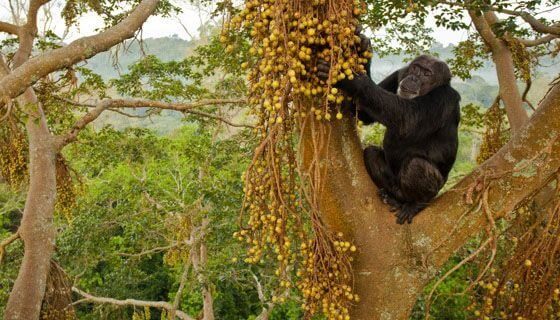In a new study published this week in the journal “Nature,” UNM Assistant Professor of Anthropology Melissa Emery Thompson is one of a group of researchers analyzing the way humans store fat and expend the energy from food.
The paper, “Metabolic acceleration and the evolution of human brain size and life history,” uses a new precise method to quantify how many calories that great apes -chimpanzees, bonobos, gorillas and orangutans use in daily lives and compares this to energy use by humans throughout the world.
Emery Thompson explains it like this. ”One of the most persistent questions about human evolution is how humans can afford to have such large brains while also living longer and reproducing faster than our ape relatives. All of these things require a lot of energy.”
She said, “This research demonstrates that, pound-for-pound, humans use substantially more energy than do other apes. That may seem like a fairly simple conclusion, but precise data on energy use in apes had not previously been available. It has been widely assumed that humans would have had to cut corners in order to afford large brains, but that does not seem to have been necessary.
“Raising the energy budget is actually quite an extraordinary evolutionary accomplishment, so there is still much to learn about how our ancestors were able to do it over such a short period of time,” she said.
Emery Thompson and the rest of the team are continuing this work to explore how variation in lifestyle, such as that between captive and wild apes and between active and sedentary human populations, affects how energy is used. They are particularly interested in how metabolic strategies may have impacted the evolution of long lifespan in humans.
A “Nature” editorial reflected on the results from the research and a new article in “Science” offered this take.
For more on the ape research of Emery Thompson and her UNM colleagues, visit the Kibale Chimpanzee Project.

